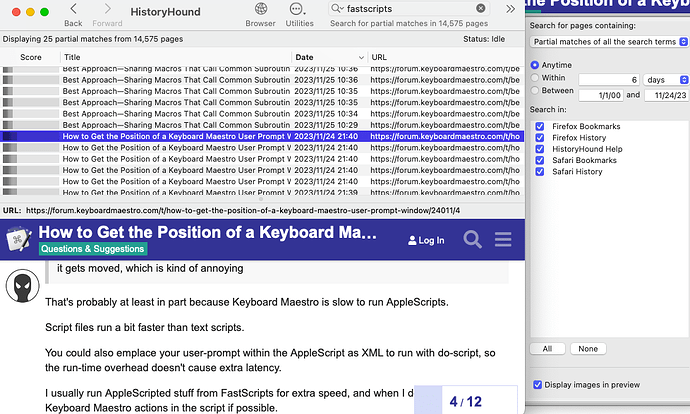I feel like @ccstone has said several times that external AppleScript triggered via FastScripts was his go-to method when speed was most important, so I assume so? But I don't have scripts large enough to feel the delay I don't think.
Edit: this must be what is on my mind from browsing recently:
PS: I was able to find this quickly thanks to HistoryHound, something I began using earlier this year. It's been very helpful!
